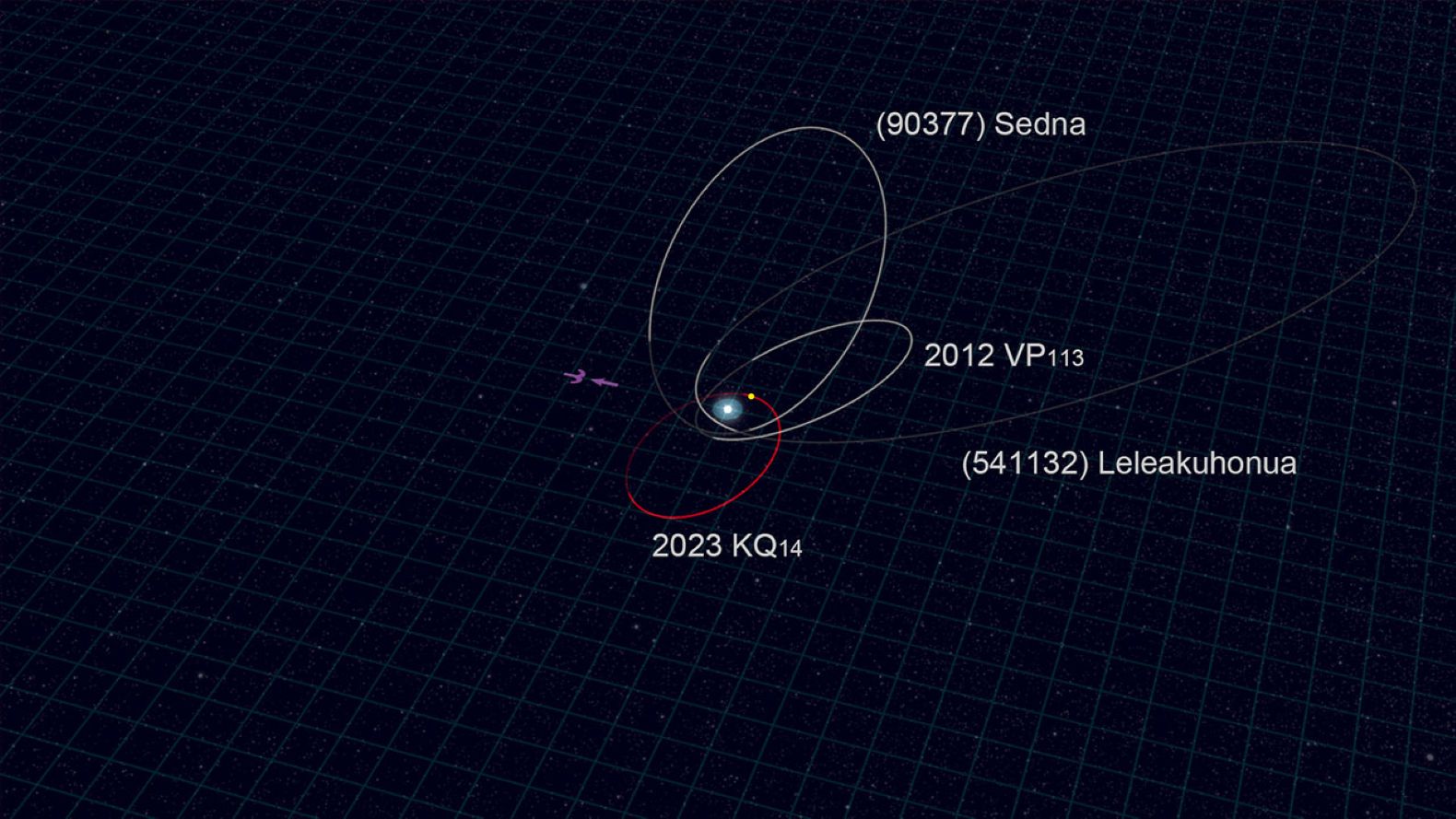Far beyond Pluto, icy wanderers known as Trans-Neptunian Objects (TNOs) drift through the vast cosmic depths. Some of them orbit at incredible distances, more than 200 times farther from the Sun than Earth, making them tough to spot, but priceless to study.
These elusive objects may hold secrets to how the Solar System formed, and even hint at the presence of a mysterious Planet Nine lurking in the shadows.
Now, the Subaru Telescope has spotted a new one: a small, distant body that’s helping scientists piece together the puzzle of our solar neighborhood’s past and its still-unfolding future.
Meet 2023 KQ14, a tiny, icy traveler discovered during the FOSSIL survey using the powerful eyes of the Subaru Telescope. Spotted during three observation windows in 2023, this mysterious object is part of an elite cosmic club.
In July 2024, astronomers followed up with the Canada-France-Hawaii Telescope and examined historical data, revealing that its orbit has been quietly changing over the void for nearly 19 years. But here’s the twist: its eccentric path makes it a sednoid, one of only four known objects of its kind. Sednoids are so far-flung and peculiar, they’re like breadcrumbs pointing toward the secret architecture of our Solar System.
Numerical simulations show that 2023 KQ14 has been gliding along a stable orbit for a staggering 4.5 billion years, basically since the Solar System itself was born. Although its current path stands apart from the few other known sednoids, scientists have found that these distant bodies once shared remarkably similar orbits around 4.2 billion years ago, much like old friends who drifted apart over cosmic time.
This split hints at something big: the outer Solar System is likely far more complex and chaotic than we ever imagined. And there’s another twist: this discovery reshapes the search for Planet Nine. If such a world exists, it may lurk farther out than models have predicted, pulling at icy fragments from a hidden corner of our planetary family.
Dr. Yukun Huang of the National Astronomical Observatory of Japan, who conducted simulations of the orbit, comments, “The fact that 2023 KQ14’s current orbit does not align with those of the other three sednoids lowers the likelihood of the Planet Nine hypothesis. It is possible that a planet once existed in the Solar System but was later ejected, causing the unusual orbits we see today.”
Regarding the significance of this discovery, Dr. Fumi Yoshida states, “2023 KQ14 was found in a region far away where Neptune’s gravity has little influence. The presence of objects with elongated orbits and large perihelion distances in this area implies that something extraordinary occurred during the ancient era when 2023 KQ14 formed.”
Understanding the orbital evolution and physical properties of these unique, distant objects is crucial for comprehending the whole history of the Solar System. At present, the Subaru Telescope is among the few telescopes on Earth capable of making such discoveries. I would be happy if the FOSSIL team could make many more discoveries like this one and help draw a complete picture of the history of the Solar System.”
Journal Reference:
- Ying-Tung Chen et al. “Discovery and Dynamics of a Sedna-like Object with a Perihelion of 66 au”, in Nature Astronomy, DOI: 10.1038/s41550-025-02595-7
